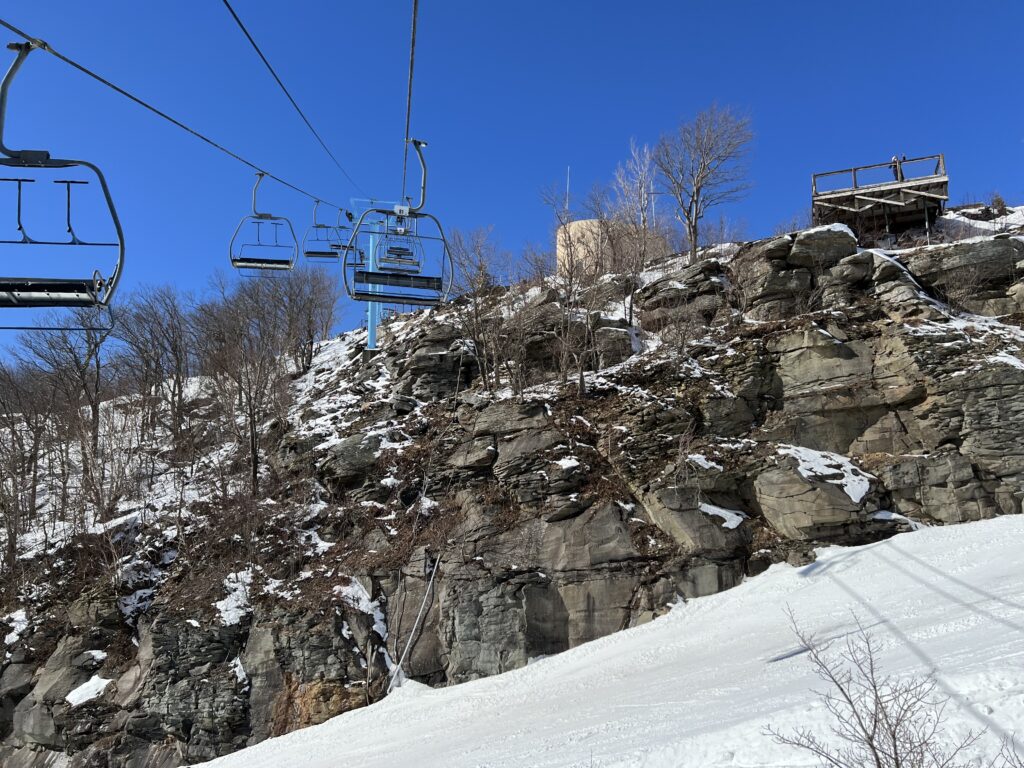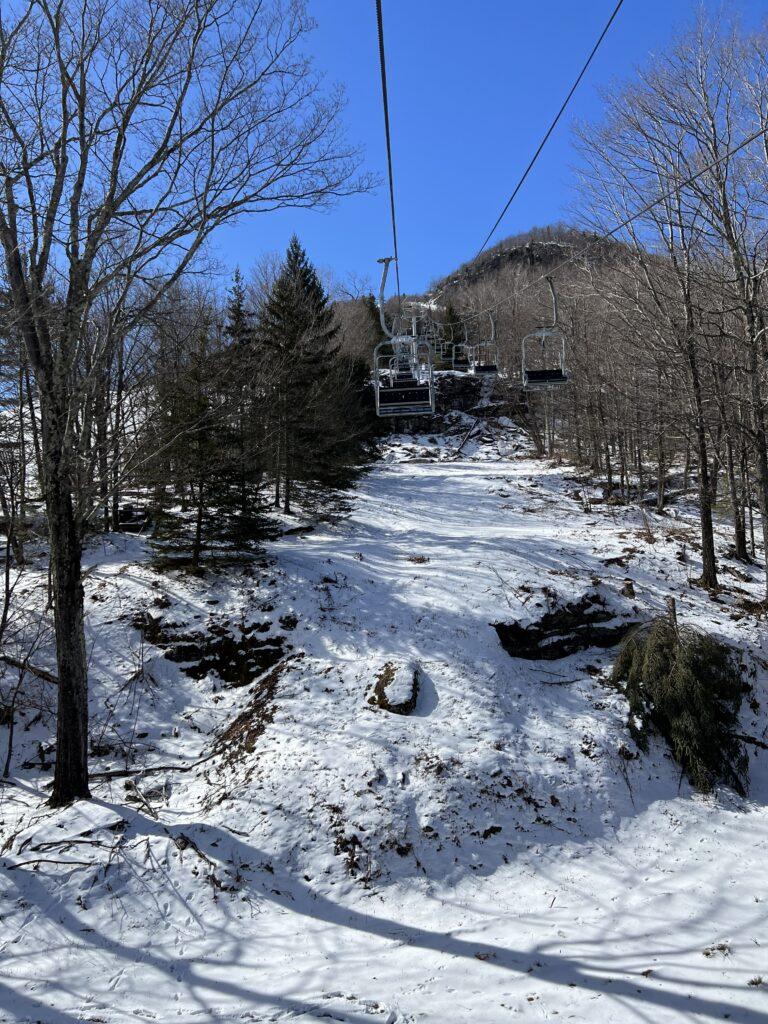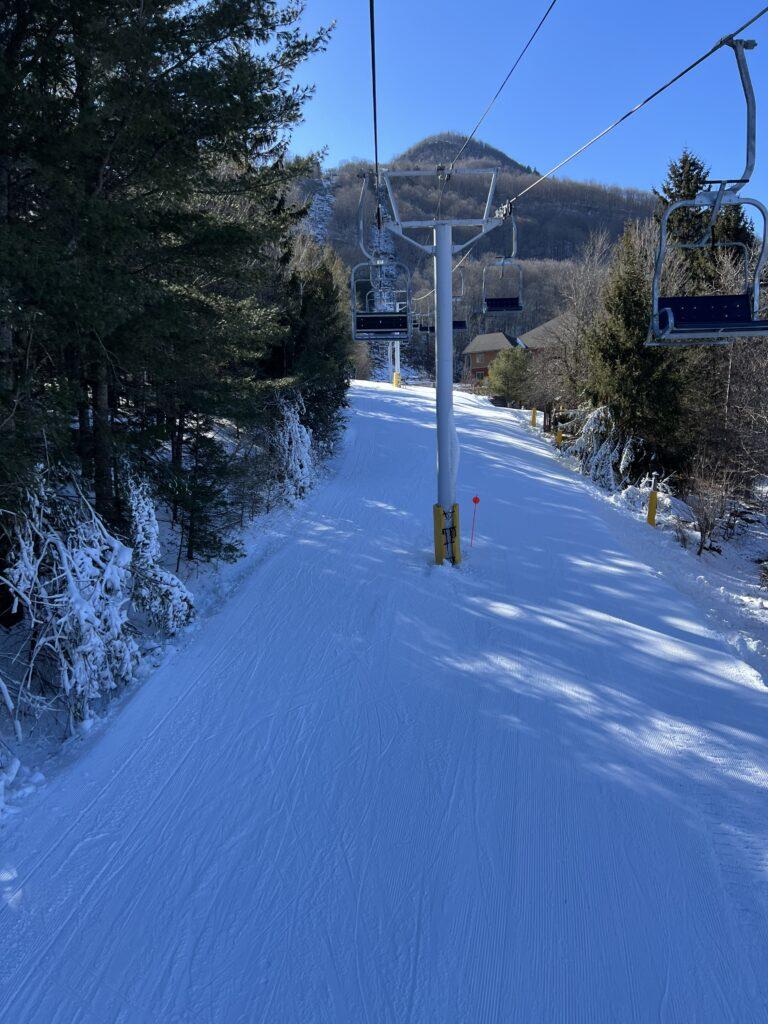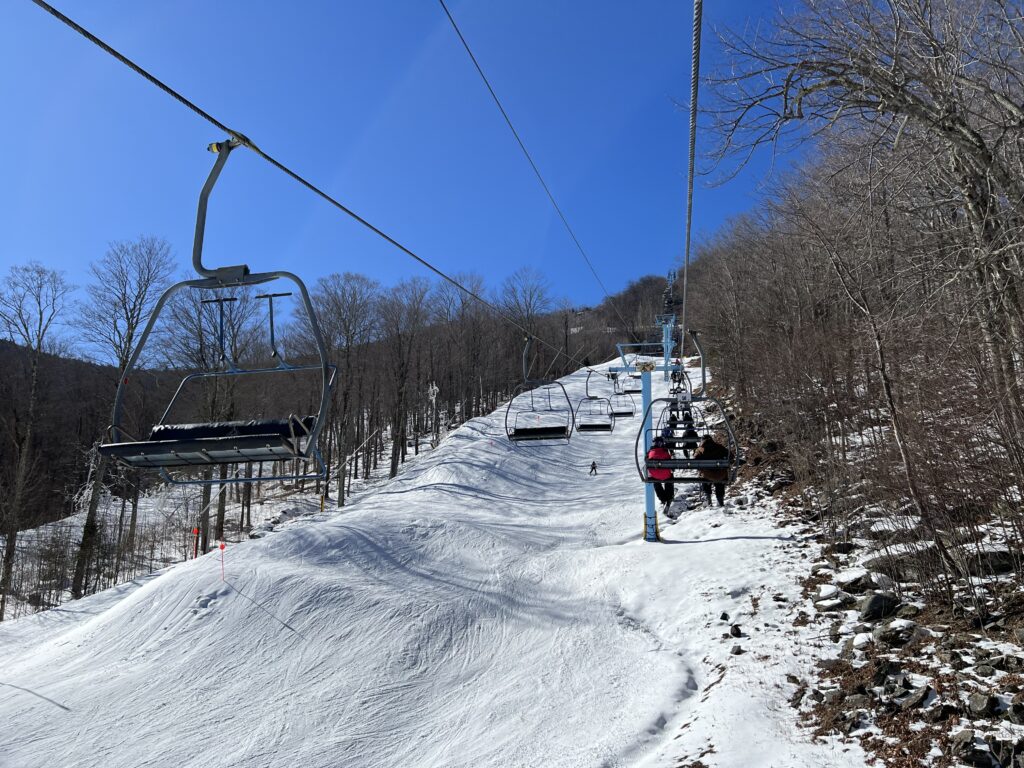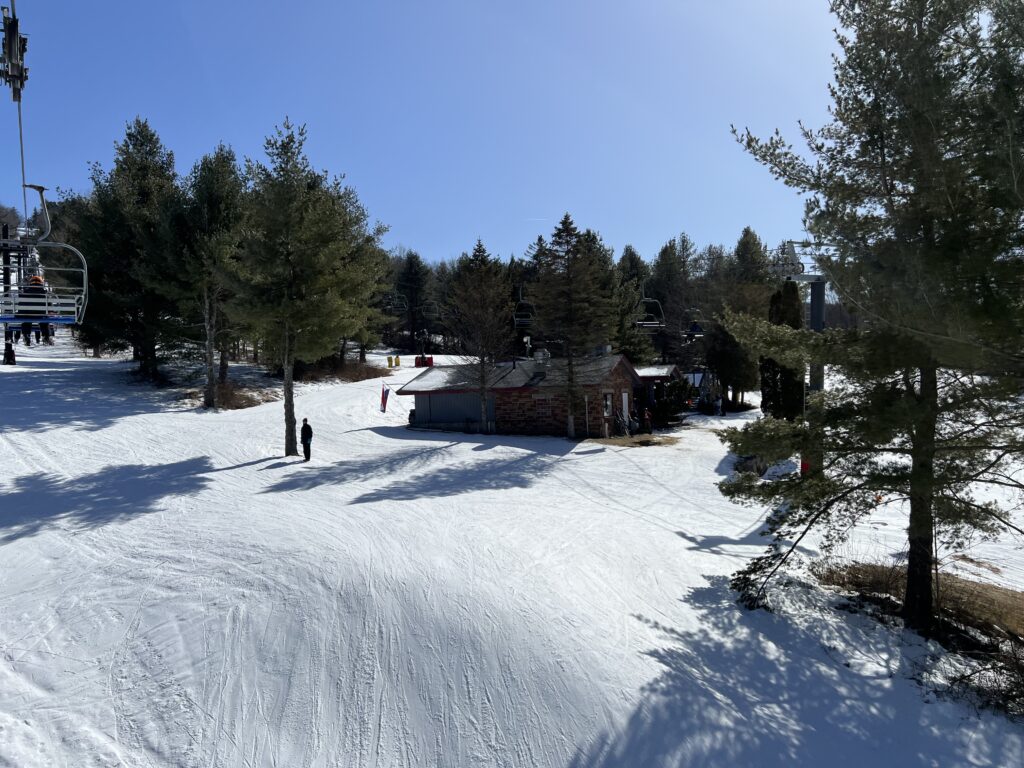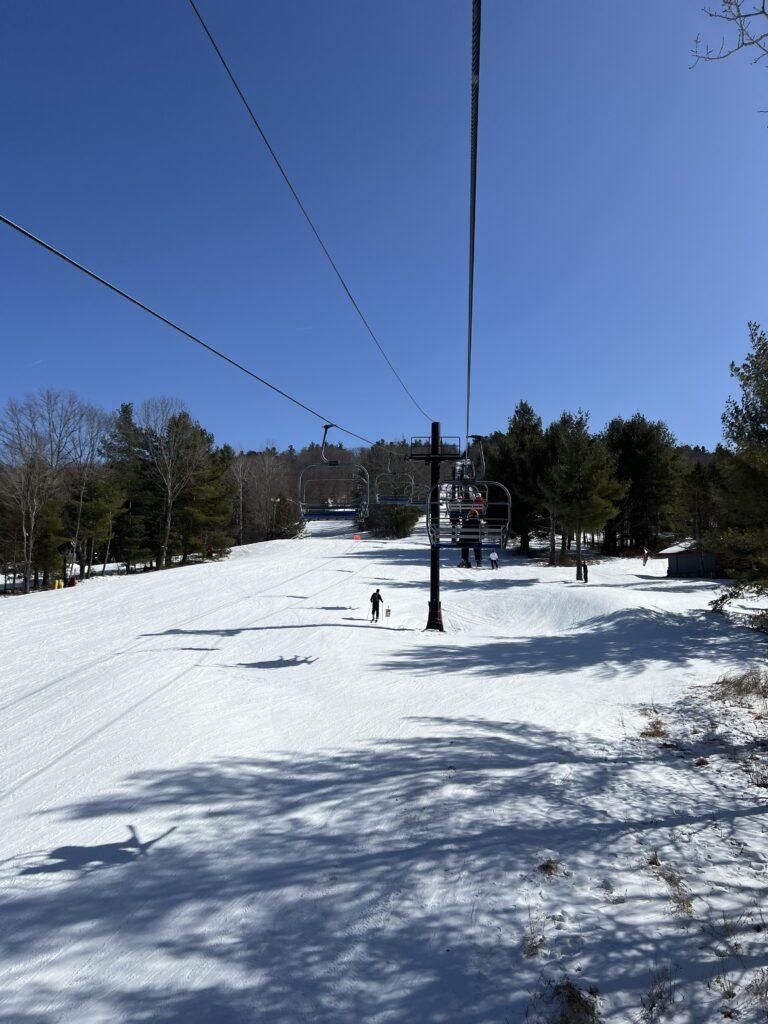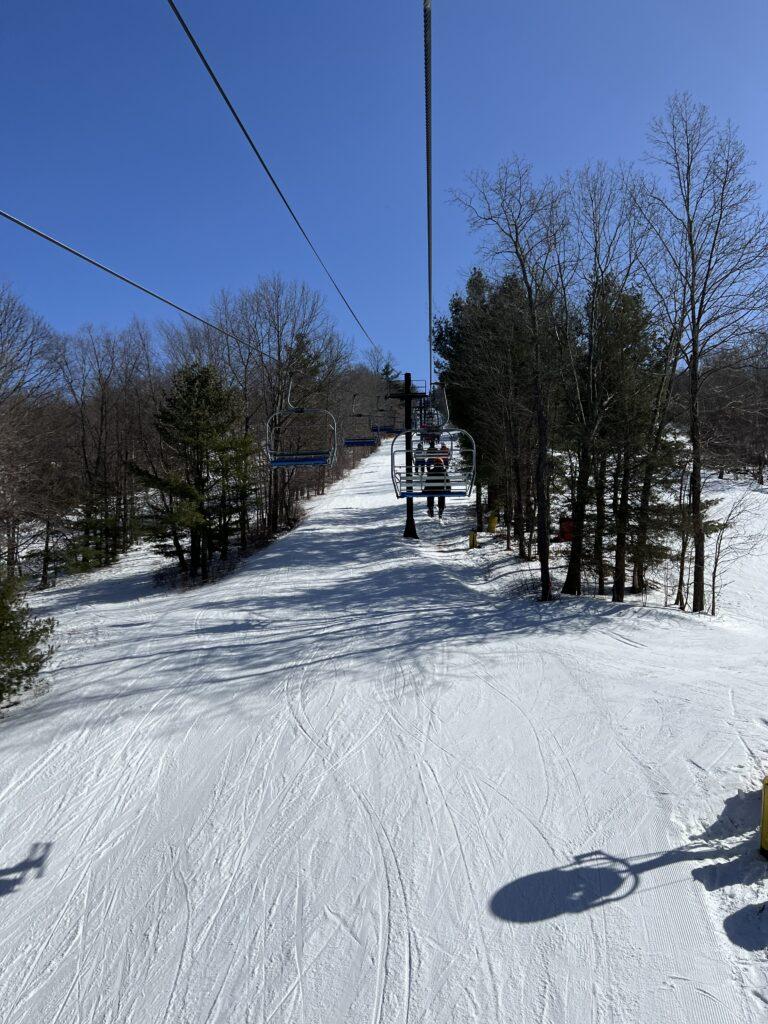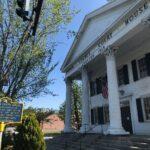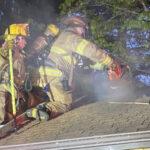by Albert Neubert
It was a perfect winter weekend that capped off a near perfect President Holiday week. Last Friday was the only day during the week that had any precipitation and that was a wet snow in the Catskills and Berkshires and some showers at the lower lying more southerly ski areas. Further north in the Green Mountains of Vermont, the Adirondack Mountains of New York, the White Mountains of New Hampshire and Maine it was another snowfall of three to six inches or more on top of several feet that fell during the holiday week.
The great stretch of weather finally came to an end with warmer temps and some rainy days this week. The good news is the extreme cold that settled in over last weekend allowed ski resort operators another chance to build bases in weak spots and that should allow them to extend their seasons well into March and even April in some cases. From this point on in the season we can expect more volatile temperatures which means snow surfaces will become more granular and frozen granular.
The angle of the sun is now much higher in the sky and it lasts longer during the day and that means the slopes will have melting even when temperatures are below freezing. Slope exposure becomes more important with those runs that face north and northwest holding up the best during the final weeks of the season. Slopes that have an eastern or southern exposure can burn out quickly almost no matter how deep the bases are. I have been to Vail, in Colorado, standing on a trail with over 100 inches of natural snow and looking across the valley at a south facing mountainside that was bare.
I skied at Hunter, in the northern Catskills, a couple days last week, and the snow conditions were incredibly good. Hunter’s management has really poured on the manmade stuff during the cold stretches and I saw bases that were easily in the eight foot range on a number of trails. Hunter even had the Zephyr Express quad chairlift running on the Hunter West side of the resort, a rarity this season. Claire’s Run, a double black diamond trail on the west side, was open for only a few days so far this season. It is one of the toughest trails at Hunter, and the Catskills in general, given its extreme pitch but also because of its vertical of over 1,300 feet. About half way down your legs start to feel the nonstop strain of that relentless pitch.
On the main face, I got another surprise and that was Lower K27, the steepest trail at Hunter, was open. Lower K27 hadn’t been open the previous two seasons because of the difficulty in trying to maintain the rest of the trail network during the unseasonably mild winters. Lower K27 has about a 500 foot vertical and it’s shaped like a funnel getting progressively narrower as you go down. The upper pitch is very daunting because of a snowmaking headwall that creates a near vertical entry way onto the trail. This trail is used as a test for instructors that are trying to pass their Level III PSIA exam, the highest in the profession. Basically, if you pass a Level III, you are supposed to be able to ski any terrain under any conditions.
I skied mostly the Jimmy Heuga Express to White Cloud to Broadway trails and then over to either Eisenhower Drive or Gun Hill Road since these tend to be less heavily trafficked. Surface conditions were terrific both days I was there with powdery surfaces the first day giving way on the second day to softer and wetter snow that came with bright sun and temps going into the upper 30s. The base depths I saw when I was there should be able to last well early April.
On Sunday, I drove east to Cornwall, Connecticut and skied at Mohawk Mountain. Mohawk had all 25 slopes and trails open and even with the parking lot almost totally full, I never waited on a lift line for more than a couple of minutes. When the entire trails network is open Mohawk skis much bigger than its roughly 600 foot vertical. While there’s nothing super challenging from the summit, there’s enough pitch to keep you on your toes and after a few hundred feet of vertical, the trails become great cruisers and get progressively wider. Novices are warned not to go to the top because there is no easy way down. Even though two trails, Pinnacle and Ledges, are marked with green circles and are accessed from the summit, they are solid intermediate runs because they are narrow and with a relatively steep pitch.
Instead, Novices should head over to the Deer Run triple chair that has about a 400 foot vertical drop. The trail network here is ideal for lower level skiers and snowboarders with trails like Victor’s Way, Pine, Laurel and Deer Run. Mohawk is part of the Indy Pass program and that entitles you to two free visits each season. Mohawk’s snowmaking is excellent and it was obvious that the area’s management made lots of snow on Saturday night, leaving a number of trails with packed powder surfaces.
I often get asked why ski areas don’t have more high speed lifts, instead of conventional chairs like what you will find at Mohawk. Those chairs are called fixed grip lifts because they operate at one speed for loading and unloading and while you ride the chair. In the case of a place like Mohawk, the chairlift lengths are simply not long enough to justify high-speed lifts. After all, it only takes about six minutes to reach the top using one of their summit triple chairs.
By contrast, high speed chairs are called “detachables” because there are three sets of cables that the chairs attach from and attach to and they are located at the base and summit terminals. The third cable is the main haul rope and that’s what allows the chairs to travel at about twice the speed of a fixed grip chair. The detaching allows the chairs to move much more slowly for ease of loading and unloading.
Installing a brand new chairlift today will costs a ski resort operator many millions of dollars. Fixed grip chairs are less expensive because they don’t have the complex detaching mechanisms at each terminal but they still requires the towers, chairs, cable and terminals. But then there are the installation costs that require heavy construction equipment to build tower and terminal footings and to pour concrete. Most times, special heavy lift helicopters must be used to hoist the towers into place.
A high speed chair will likely cost nearly double what a conventional chair would cost. If you really wanted a high speed chair to replace one of the fixed grip triples at Mohawk, it would cost around $10 million. That would get you up the mountain in about three minutes. Your lift ticket would also reflect that expenditure because you would have to sell more than an entire season’s worth of lift tickets just to cover the cost of such a lift. Larger areas and those than own multiple resorts can afford to purchase these luxury lifts because they can spread the costs across a very large skier and snowboarder base of visitors. Just think about those costs before you complain about riding a fixed grip chair. It sure beats hiking up the mountain.
Think getting a lift, and happy skiing and riding! You can contact me at asneubert@aol.com or you can visit my Instagram page @asneubert

